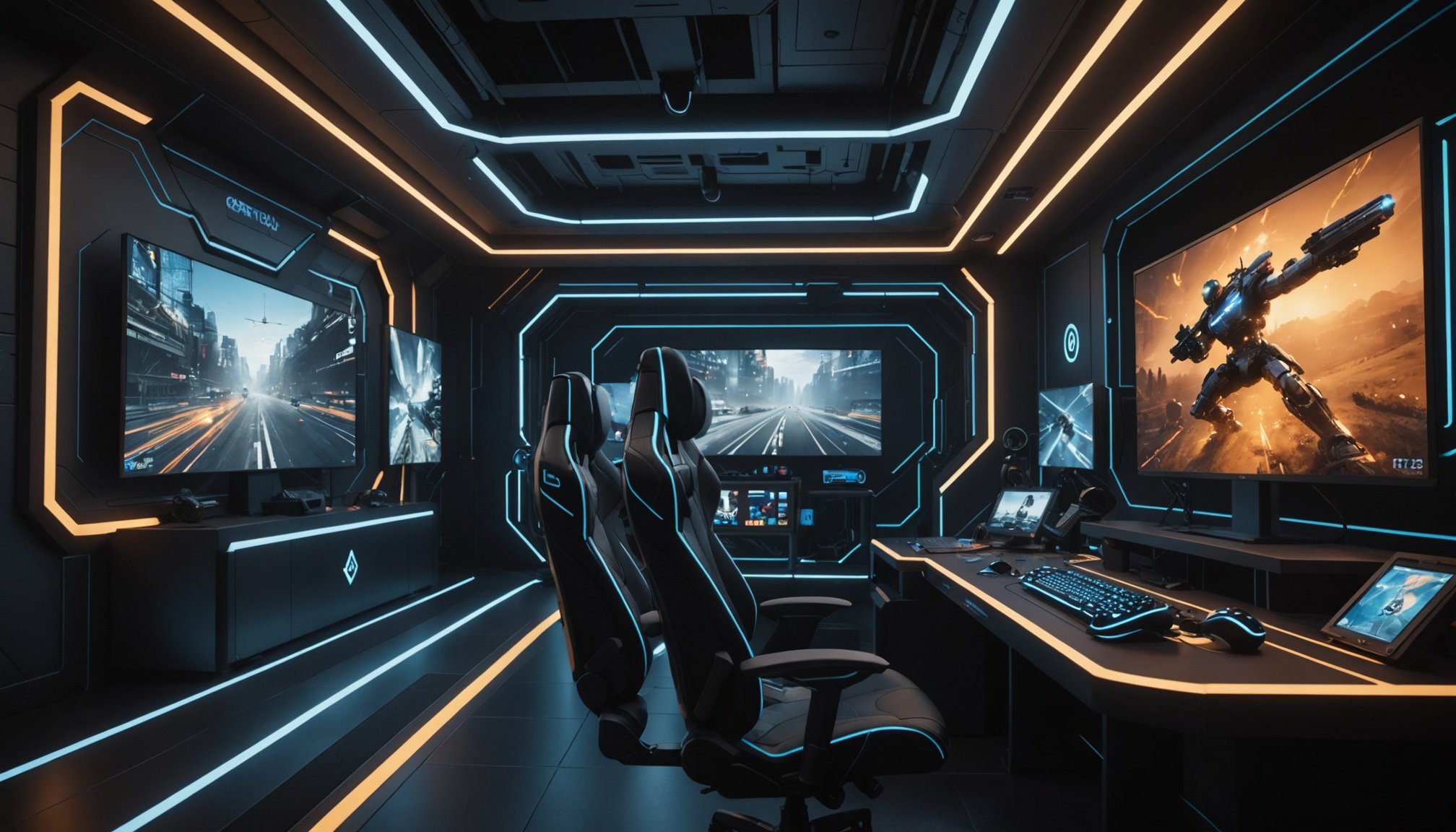The Role of AI in Gaming Lighting
Artificial Intelligence (AI) is fundamentally transforming gaming, especially through dynamic lighting and real-time adjustments. In gaming, AI technology can enhance immersion by altering lighting based on player actions. This innovation contributes substantially to the immersive experiences that modern gamers seek.
AI in gaming is more than just a buzzword—it’s a set of advanced algorithms designed to adapt on-the-fly. Real-time adjustments enable environments to respond actively to events, creating a seamless atmosphere that pulls players deeper into the game world. Imagine entering a dark cave in a role-playing game. The lighting could dim and flicker based on your character’s torch movement, enhancing suspense effectively.
Also to discover : Unlocking the future: innovative approaches to seamless voice recognition integration in narrative-driven video games
Dynamic lighting, powered by AI, allows developers to craft scenes that respond to player decisions. Whether it’s the changing hues during a battle or the gradual light transitions as day turns to night, the lighting adapts, reflecting the narrative or mood.
Incorporating AI real-time adjustments ensures gaming environments feel alive and responsive, heightening engagement. Leveraging AI, game creators craft a sophisticated layer of interactivity, redefining the boundaries of virtual storytelling through immersive lighting.
Also read : Shattering the limits of visual fidelity: how real-time ray tracing elevates space exploration gaming
Examples of AI-Enhanced Lighting in Popular Games
The integration of AI lighting techniques into game design has transformed the aesthetic experience, providing richer, more dynamic visual environments. By examining several case studies of AI lighting examples, we can better understand its implementation in diverse game genres.
Breakdown of Specific Games Utilizing AI for Lighting
A prominent example is “Control,” where AI-driven lighting enhances its eerie atmosphere, creating a compelling and immersive environment. The dynamic lighting adjusts according to the player’s movements, casting realistic shadows and reflections that contribute to the game’s spooky ambiance. This approach offers a distinct contrast to traditional static lighting design, which often lacks adaptability and realism.
Analysis of Lighting Techniques in Various Game Genres
In action-adventure games, AI lighting is employed to underscore narrative elements, subtly guiding player focus and emotion. Simulations, on the other hand, use AI to recreate authentic lighting conditions, enhancing realism. Strategy games may utilise AI lighting for visual cues, providing strategic insights during gameplay.
Impact on Player Engagement and Experience
AI-enhanced lighting significantly affects player engagement by creating palpable environments that respond to player actions. Notable titles employing such features often receive positive player feedback, noting improved immersion and overall satisfaction. By comparing traditional and AI-driven versions, players generally report enjoying the increased realism and interaction depth, highlighting AI’s potential for refining gaming experiences.
Benefits of Dynamic Real-Time Lighting Adjustments
Dynamic real-time lighting adjustments can significantly uplift the benefits of AI lighting in gaming environments. One of the key benefits is enhanced visual storytelling. Adaptive lighting plays a critical role in creating immersive atmospheres, where the lighting conditions change according to the storyline. This makes transitioning between game scenes seamless, thereby drawing players deeper into the narrative. When lighting dynamically adjusts, gamers notice subtle shifts that highlight actions, emotions, and pivotal plot moments.
Moreover, efficient lighting can boost gaming performance by improving frame rates. AI-driven systems optimise resource usage by modifying light intensity and direction, reducing strain on graphics processors. This allows for enhanced visuals without compromising speed, achieving smoother renditions of complex scenes. Consequently, players experience a more fluid game flow.
Personalization is another facet where real-time lighting shines. By analysing individual player preferences, AI can adjust light settings to suit gaming styles, ensuring each session feels tailor-made. Whether players prefer environments that are bright, dim, or somewhere in between, AI can provide the suitable setting automatically. This customized experience not only enhances enjoyment but also makes gameplay more engaging and personal.
Challenges in Implementing AI Lighting
Implementing AI lighting in gaming is not without its hurdles. One major AI challenge is the technology limitations we face today, particularly in gaming contexts. Advanced lighting algorithms require significant computational power, which can be at odds with the hardware capabilities of many average users. Thus, developers often find themselves in a balancing act between achieving visual realism and ensuring smooth performance.
In the quest for visual fidelity, these development hurdles become apparent. Real-time lighting effects need to look convincing while maintaining optimal frame rates to avoid disrupting gameplay. This challenge can sometimes lead to compromised graphics or require gamers to have more powerful and expensive PCs or consoles.
Another significant issue is product integration into existing gaming frameworks. AI systems must seamlessly mesh with current game engines and assets, which often involves adapting or completely overhauling previous configurations. This complex process can introduce bugs and delays as developers work out the kinks.
Ultimately, while AI lighting promises many advancements, the path to its full-fledged implementation is not straightforward. By addressing these AI challenges, developers can eventually harness the technology’s potential to revolutionize gaming visuals substantially.
Future Trends in AI and Lighting Technology in Gaming
The future of gaming lighting is poised for a technological revolution, thanks to AI advancements. One key area of innovation is the development of real-time adaptive lighting. This emerging technology promises to enhance player experiences by adjusting the game’s ambience dynamically, according to players’ actions and emotional states. Imagine a world where a slight shift in a player’s mood could trigger a corresponding atmospheric change within a game—creating a deeply immersive environment.
In addition to adaptive lighting, another predicted trend is the use of AI for generating hyper-realistic lighting and shadow effects at unprecedented speeds, offering gamers a more authentic experience. Game developers are keenly focused on integrating these emerging technologies to streamline workflows and elevate game design quality without compromising the creative vision.
Experts in the industry highlight that the long-term implications of AI lighting can significantly transform game development. They foresee a shift where developers might spend less time manually programming lighting sequences, with AI paving the way for more robust and efficient lighting schemes that respond intelligently to various in-game scenarios, heralding a new era in creative freedom and efficiency.






